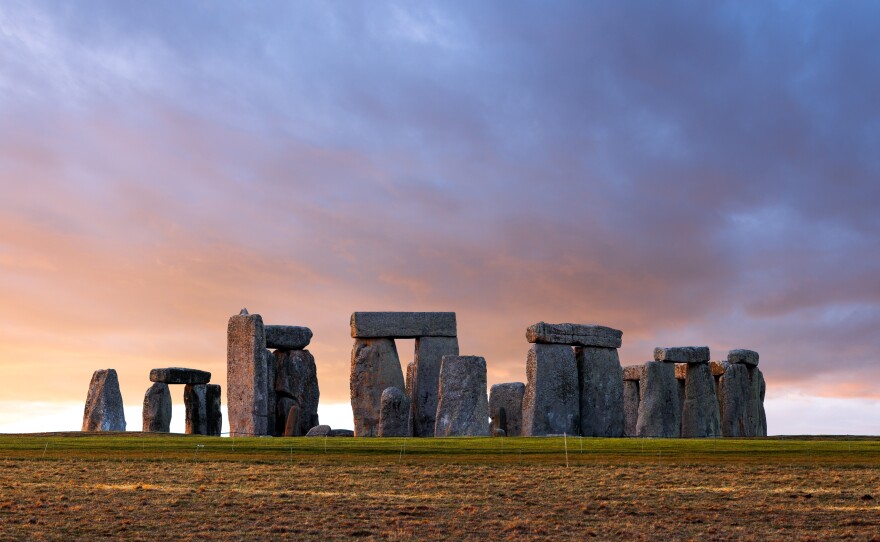A new study reveals that the architects and builders of Stonehenge may have been Welsh, from more than 100 miles away. The journal Scientific Reports reveals some human remains excavated at the site were from the Preseli Mountains in Wales. While many studies have focused on the construction of Stonehenge, this is one of the first to explore who the people were that built it.
The earliest bones excavated date to about 3000 B.C., and the rest span a range of 500 years, according to The Guardian. John Pouncett, a co-author of the study, says, "The range of dates raises the possibility that for centuries people could have been brought to Stonehenge for burial with the stones."
Because some of the monoliths used to build Stonehenge also come from the Preseli Mountains, it is possible that those buried there transported the stones, or were taken to Stonehenge from Wales for burial.
Pouncett adds, "The cremated remains ... and updated mapping of the biosphere suggest that people from the Preseli Mountains not only supplied the bluestones used to build the stone circle but moved with the stones and were buried there too."
The research shows the type of wood fuel used in cremation of some of the bones also was not local. In addition, the bones' cremation dates are "tantalizingly close" to the time when the stones were first erected, according to The Guardian.
Christophe Snoeck, a co-author of the study, says, "We are able to analyze [the bones] directly, and for the first time actually get information on the people buried at Stonehenge. Whether they actually constructed the monument or not is another story, but they are contemporary with the monument. The dates match, and that is a pretty good indicator that they are linked to the construction of the site."
Snoeck says analysis of "strontium isotopes" was used in determining where the human remains may have originated.
Strontium isotope composition "reflects an average of the foods eaten over the last decade or so before death," the study notes.
"Strontium isotope analysis has been used for decades to reveal the mobility of human and fauna, but exclusively on unburned material," Snoeck says, according to The Los Angeles Times, "I demonstrated that cremated bone fragments could also be used in such studies, opening the possibility to study many more sites, including Stonehenge."
The Times reports:
"Different types of bedrock display different ratios of two strontium isotopes — strontium-87 and strontium-86. Plants absorb strontium as they grow, and as people eat those plants the strontium passes into their bones and teeth."By creating a map of strontium isotope ratios across a geographical area and comparing that with those found in a bone fragment, scientists can determine a human or animal's place of origin — or at least where they spent the majority of the last 10 years before they died."
Researchers identified bone fragments from 25 distinct individuals buried at the site. Bones from 10 of those people had strontium isotopes that were consistent with those found in Wales.
The study concludes:
"We conclude that at least 40% of those buried at Stonehenge did not exclusively spend the last decade or so of their lives in the environs of the site, or indeed anywhere on the chalklands of southern England. The highest strontium isotope ratios are consistent with living on geological formations in western Britain, a region that includes west Wales, the known source of Stonehenge's bluestones. While strontium isotope ratios on their own cannot distinguish between places with similar values, this connection suggests that west Wales is the most likely origin of at least some of these individuals. Indeed, all the measurements fall between the biologically available strontium values for Stonehenge and west Wales, consistent with people moving between the two locations at different times in their lives. Finally, the results suggest that at least some 'non-local' individuals were cremated away from Stonehenge, and that their cremated remains were brought to the site for burial, perhaps in conjunction with the raising of the bluestones."
Copyright 2018 NPR. To see more, visit http://www.npr.org/.







